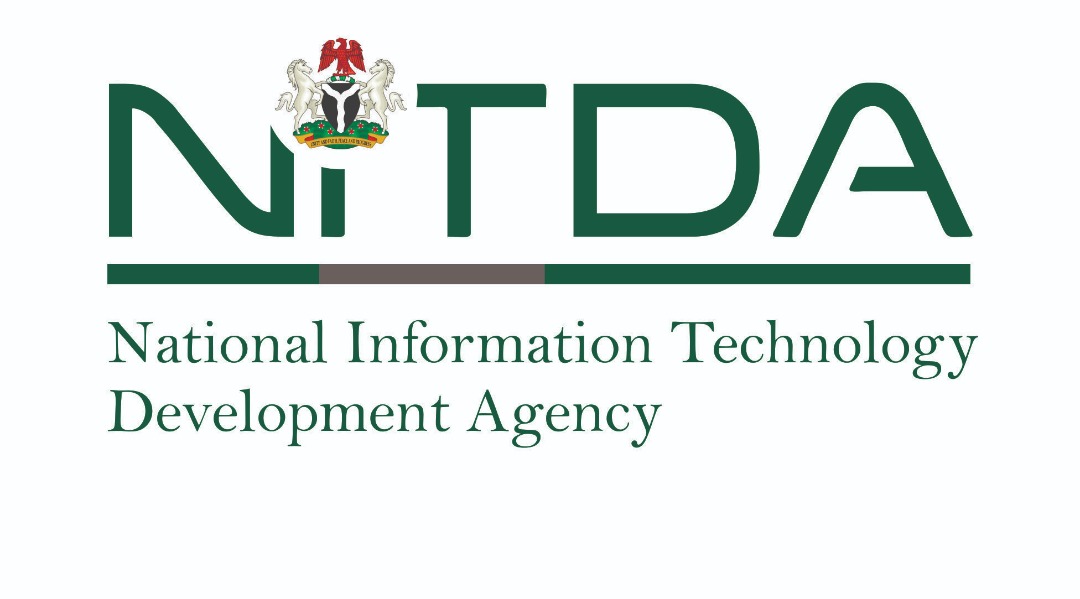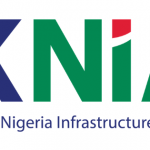Technology
Avoiding Security Complexities

Many years ago, the firewall was everything. Defence-in depth was a concept defined as layered defence with multiple firewalls on the path.
Behind the firewall was a fortress. Organisations designed networks with strong perimeters and demilitarised zones to ensure the crown jewels were well-protected. Attackers had a difficult time trying to break into the firewalls.
On the physical layer, Network Admission Control (NAC) technologies were implemented to prevent intruders from having direct access into the network by preventing them from plugging unauthorised devices into the network. Before a device was admitted, it had to meet a minimum requirement defined by the organisation.
Those years are gone and maybe gone forever. Cloud computing, Bring Your Own Device (BYOD), Artificial Intelligence, Internet of Things (IoT), VPNs and Remote Working Capabilities have dramatically changed the way businesses run.
These technologies have introduced a level of innovation and disruption that were unimaginable only a few years ago. They have resulted in the collapse of the traditional network perimeter, thereby increasing the attack surface for cyber-attacks. Enterprise networks coverage is today being extended beyond our imagination – outside the traditional datacentres to smartphones, cloud platforms, mobile computers and IoT interfaces without geographical boundaries.
The bad guys now have a plethora of interfaces to launch their attacks on; they do not have to breach the network using traditional social engineering tactics physically.
The recent changes in the work environment occasioned by the COVID-19 have further amplified the extension of network boundaries beyond the traditional datacentres. Employees work from home with devices and connections into the enterprise networks that were not originally designed for such. Improvised connections were made to allow functionality because the pandemic came without announcement.
The danger this poses is that some of these end devices were not originally designed with security in mind. Even if security was a consideration, not so much for enterprise data protection. These devices are most of the time not hardened, and their owners may not understand the effects on the overall organisational security posture.
A handful of these devices are installed with default passwords, and most times, these passwords are not changed during or after installation.
So, it is easy to guess the password by manual methods or using advanced dictionary or brute force attack methods. Another risk posed by these endpoints is the lack of security updates and patches. Because they are sometimes not seen to be part of the enterprise network, they are not included in the patch management programme, and their presence introduces high-level vulnerabilities within the enterprise network.
It then becomes easier to utilise malware that could tunnel through the firewall to breach the enterprise network, instead of spending months and years trying to break into the firewall or layers of firewalls.
In recent years, large-scale attacks have been launched using malware by exploiting known vulnerabilities and security gaps on endpoints.
For example, the WannaCry, Petya and another variant of Petya, the NotPetya were employed to launch attacks on enterprise networks through vulnerable endpoints. Another danger with this trend is potential data leakage because these devices are used to either temporarily or permanently store organisational data.
There is also concern about device loss. If these devices are lost, there is a risk of exposing the organisation’s data to unauthorised entities, and that could both result in financial and reputational damage.
These dangers are also expanded by the impact of the COVID 19 pandemic, where organisations made ad hoc improvisions to support businesses while employees work from home.
As commerce resumes, organisations are beginning to discover some capabilities to support their businesses remotely, and they are also rethinking their business continuity strategies.
For some businesses, this is not just a temporal shift, but a change which has permanently altered the operational procedures of the organisation.
Legacy cybersecurity strategies, techniques and investments will not be enough to mitigate the rising cybersecurity concerns introduced by this new way of working. Protection has gone beyond throwing in uncoordinated technical solutions and efforts.
Organisations need to rethink a new approach for the protection of their assets within the ever-growing complexity both to remain afloat and also to derive commensurate Returns On Security Investments (ROSI). A well-crafted strategy will ensure that cybersecurity efforts are coordinated within the enterprise, without duplication of efforts and resources, which will, in turn, drive down the cost of implementing cybersecurity initiatives.
To improve the security posture, organisations must do the following:
Continuously monitor the devices, applications, and processes running on the network.
Automate security monitoring and mitigation.
Implement systems that are capable of automatic detection, isolation and containment of threats within the network.
Ensure that monitoring covers event data, session data, and historical data on endpoint usages, such as past processes, network connections, and other information.
Another measure organisations should take is reducing complexities. The extension of the network boundaries has not stopped organisations from using existing network solutions to protect the enterprise network.
However, in a bid to ensure the protection of the on-premise infrastructure and the ones beyond the organisational traditional network boundaries, organisations combine existing technologies with new solutions and the resultant effect is an increase in complexity.
To effectively manage security, organisations should put measures in place to ensure a reduction in complexity and enhancing visibility. This can be achieved by unifying all efforts and technologies for managing both on-premise and off-premise infrastructure in a single platform. Beyond technical controls, organisations should develop procedures, standards, and policies for acceptable use of organisational resources.
For further information and engagements on the pcl. cyber security services, send an email to [email protected]
Technology
Lagos’ Team Nevo Wins 3MTT Southwest Regional Hackathon

By Adedapo Adesanya
Lagos State’s representative, Team Nevo, won the 3 Million Technical Talent (3MTT) South-West Regional Hackathon, on Tuesday, December 9, 2025.
The host state took the victory defeating pitches from other south west states, including Oyo, Ogun, Osun, Ekiti, and Ondo States.
This regional hackathon was a major moment for the 3MTT Programme, bringing together young innovators from across the South-West to showcase practical solutions in AI, software development, cybersecurity, data analysis, and other key areas of Nigeria’s digital future.
Launched by the Federal Ministry of Communications, Innovation, and Digital Economy, the hackathon brought together talented young innovators from across the Southwest region to showcase their digital solutions in areas such as Artificial Intelligence (AI)/Machine Learning, software development, data analysis, and cybersecurity, among others.
“This event not only highlights the potential of youth in South West but also advances the digital economy, fosters innovation, and creates job opportunities for our young people,” said Mr Oluwaseyi Ayodele, the Lagos State Community Manager.
Winning the hackaton was Team Nevo, made up of Miss Lydia Solomon and Mr Teslim Sadiq, whose inclusive AI learning tool which tailors academic learning experiences to skill sets of students got the top nod, with N500,000 in prize money.
Team Oyo represented by Microbiz, an AI business tool solution, came in second place winning N300,000 while Team Ondo’s Fincoach, a tool that guides individuals and businesses in marking smarter financial decisions, came third with N200,000 in prize money.
Others include The Frontiers (Team Osun), Ecocycle (Team Ogun), and Mindbud (Team Ekiti).
Speaking to Business Post, the lead pitcher for Team Nevo, Miss Solomon, noted, “It was a very lovely experience and the opportunity and access that we got was one of a kind,” adding that, “Expect the ‘Nevolution’ as we call it, expect the transformation of the educational sector and how Nevo is going to bring inclusion and a deeper level of understanding and learning to schools all around Nigeria.”
Earlier, during his keynote speech, the chief executive officer (CEO) of Sterling Bank, Mr Abubakar Suleiman, emphasised the need for Nigeria’s budding youth population to tap into the country’s best comparative advantage, drawing parallels with commodities and resources like cocoa, soyabeans, and uranium.
“Tech is our best bet to architect a comparative advantage. The work we are doing with technologies are very vital to levelling the playing field.”
Technology
re:Invent 2025: AWS Excites Tech Enthusiasts With Graviton5 Unveiling

By Aduragbemi Omiyale
One of the high points of the 2025 re:Invent was the unveiling of Graviton5, the fifth generation of custom Arm-based server processors from Amazon Web Services (AWS).
Many tech enthusiasts believe that the company pushed the limits with Graviton5, its most powerful and efficient CPU, frontier agents that can work autonomously for days, an expansion of the Amazon Nova model family, Trainium3 UltraServers, and AWS AI Factories suitable for implementing AI infrastructure in customers’ existing data centres.
Graviton5—the company’s most powerful and efficient CPU
As cloud workloads grow in complexity, organizations face a persistent challenge to deliver faster performance at lower costs and meet sustainability commitments without trade-offs.
AWS’ new Graviton5-based Amazon EC2 M9g delivers up to 25% higher performance than its previous generation, with 192 cores per chip and 5x larger cache.
For the third year in a row, more than half of new CPU capacity added to AWS is powered by Graviton, with 98 per cent of the top 1,000 EC2 customers—including Adobe, Airbnb, Epic Games, Formula 1, Pinterest, SAP, and Siemens—already benefiting from Graviton’s price performance advantages.
Expansion of Nova family of models and pioneers “open training” with Nova Forge
Amazon is expanding its Nova portfolio with four new models that deliver industry-leading price-performance across reasoning, multimodal processing, conversational AI, code generation, and agentic tasks. Nova Forge pioneers “open training,” giving organizations access to pre-trained model checkpoints and the ability to blend proprietary data with Amazon Nova-curated datasets.
Nova Act achieves breakthrough 90% reliability for browser-based UI automation workflows built by early customers. Companies like Reddit are using Nova Forge to replace multiple specialized models with a single solution, while Hertz accelerated development velocity by 5x with Nova Act.
Addition of 3 frontier agents, a new class of AI agents that work as an extension of your software development team
Frontier agents represent a step-change in what agents can do. They’re autonomous, scalable, and can work for hours or days without intervention. AWS announced three frontier agents—Kiro autonomous agent, AWS Security Agent, and AWS DevOps Agent. Kiro autonomous agent acts as a virtual developer for your team, AWS Security Agent is your own security consultant, and AWS DevOps Agent is your on-call operational team.
Companies, including Commonwealth Bank of Australia, SmugMug, and Wester Governors University have used one or more of these agents to transform the software development lifecycle.
Unveiling Trainium3 UltraServers
As AI models grow in size and complexity, training cutting-edge models requires infrastructure investments that only a handful of organizations can afford.
Amazon EC2 Trn3 UltraServers, powered by AWS’s first 3nm AI chip, pack up to 144 Trainium3 chips into a single integrated system, delivering up to 4.4x more compute performance and 4x greater energy efficiency than Trainium2 UltraServers.
Customers achieve 3x higher throughput per chip while delivering 4x faster response times, reducing training times from months to weeks. Customers including Anthropic, Karakuri, Metagenomi, NetoAI, Ricoh, and Splash Music are reducing training and inference costs by up to 50 per cent with Trainium, while Decart is achieving 4x faster inference for real-time generative video at half the cost of GPUs, and Amazon Bedrock is already serving production workloads on Trainium3.
Technology
NITDA Alerts Nigerians to ChatGPT Vulnerabilities

By Adedapo Adesanya
The National Information Technology Development Agency (NITDA) has issued an advisory on new vulnerabilities in ChatGPT that could expose users to data-leakage attacks.
According to the advisory, researchers discovered seven vulnerabilities affecting GPT-4o and GPT-5 models that allow attackers to manipulate ChatGPT through indirect prompt injection.
The agency explained that hidden instructions placed inside webpages, comments, or Uniform Resource Locators (URLs) can trigger unintended commands during regular browsing, summarisation, or search actions.
“By embedding hidden instructions in webpages, comments, or crafted URLs, attackers can cause ChatGPT to execute unintended commands simply through normal browsing, summarization, or search actions,” they stated.
The warning followed rising concerns about AI-powered tools interacting with unsafe web content and the growing dependence on ChatGPT for business, research, and public-sector tasks.
NITDA added that some flaws allow the bypassing of safety controls by masking malicious content behind trusted domains.
Other weaknesses take advantage of markdown rendering bugs, enabling hidden instructions to pass undetected.
It explained that in severe cases, attackers can poison ChatGPT’s memory, forcing the system to retain malicious instructions that influence future conversations
They stated that while OpenAI has fixed parts of the issue, Large-Language Models (LLMs) still struggle to reliably separate genuine user intent from malicious data.
The Agency warned that these vulnerabilities could lead to a range of cybersecurity threats, including unauthorised actions carried out by the model; unintended exposure of user information; manipulated or misleading outputs; and long-term behavioural changes caused by memory poisoning, among others.
It advised Nigerians, businesses, and government institutions to adopt several precautionary steps to stay safe. These include limiting or disabling the browsing and summarisation of untrusted websites within enterprise environments and enabling features like browsing or memory only when necessary.
It also recommended regular updates to deployed GPT-4o and GPT-5 models to ensure known vulnerabilities are patched.
-

 Feature/OPED6 years ago
Feature/OPED6 years agoDavos was Different this year
-
Travel/Tourism9 years ago
Lagos Seals Western Lodge Hotel In Ikorodu
-

 Showbiz3 years ago
Showbiz3 years agoEstranged Lover Releases Videos of Empress Njamah Bathing
-

 Banking7 years ago
Banking7 years agoSort Codes of GTBank Branches in Nigeria
-

 Economy3 years ago
Economy3 years agoSubsidy Removal: CNG at N130 Per Litre Cheaper Than Petrol—IPMAN
-

 Banking3 years ago
Banking3 years agoFirst Bank Announces Planned Downtime
-

 Banking3 years ago
Banking3 years agoSort Codes of UBA Branches in Nigeria
-

 Sports3 years ago
Sports3 years agoHighest Paid Nigerian Footballer – How Much Do Nigerian Footballers Earn














